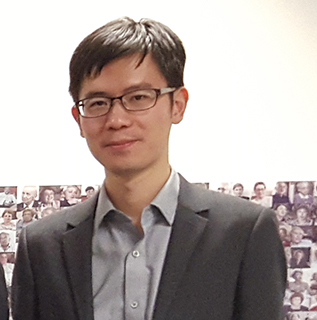
Cheng Fang
Cheng Fang may have come to the United States to study film, but after he graduated from USC’s School of Cinematic Arts with an M.F.A. in 2014, he knew he wanted to do something that linked his film skills with his home country of China.
“All my passion was kind of to contribute to my country, China, and also maybe how to get more connections between China and here, America,” Fang said.
He found a role in which he can do just that at USC Shoah Foundation, where he currently works as part of the project to record video testimony from survivors of the Nanjing Massacre.
USC Shoah Foundation began adding testimony from these survivors to the Visual History Archive in 2012, in partnership with Nanjing Massacre Memorial Hall in China. So far, the Institute has recorded around 100 testimonies, many of which are in the process of being indexed and integrated into the Visual History Archive.
Through @USCShoahFdn Fang found a way to utilize his film skills and passion for China.
Fang said the project is important, in part, because many people in the United States don’t have a good understanding of the event, in which the Japanese captured then-capital of the Republic of China, Nanjing, in December 1937, killed up to 300,000 people, and raped many others in the following six weeks. Though it is decades old conflict, the details of the massacre are still widely contested.
“The Japanese government until today are still denying the existence of the Nanjing Massacre, and very little is known in the Western world,” Fang said
Fang works with Karen Jungblut, director of global initiatives, to seek out survivors of the massacre and interview them. On a trip to China in December 2016, one that coincided with China’s National Day of Remembrance, Fang was part of a three-person team that took turns interviewing the survivors. On the trip, which lasted just over a week, Fang and his colleagues collected more than 20 testimonies.
When he’s not working on collecting interviews, Fang helps research and index existing videos, as well as develop and sustain relationships with the Institute’s Chinese partners. In 2006, Fang assisted Jungblut when she hosted Nanjing Massacre scholars at the institute to learn more about the Visual History Archive and discuss future collaborations.
“I help make connections between USC Shoah Foundation and our partners,” Fang said of his role.
Though Fang did not personally know people who had been affected by the Nanjing Massacre before beginning his work with USC Shoah Foundation, he said most of the older generation in China has memories from the Japanese occupation.
“I have a very great relationship with my grandparents, but I never talked with them about their history,” he said. “But after the last trip, when I came home I actually had a long talk with my grandparents asking about their experience in the Japanese occupied period. And I think this definitely brings us together.”
Fang said understanding older generations is something all of China collectively can work on doing.
“China is developing very fast, and everybody is looking forward. We seldom have the chance to actually look back to go over what happened to our fathers, our grandfathers in the twentieth century,” he said. “So I think this is a very meaningful thing to do, not just for me but also the whole country to, at a certain point, look back, try to learn something from our past.”